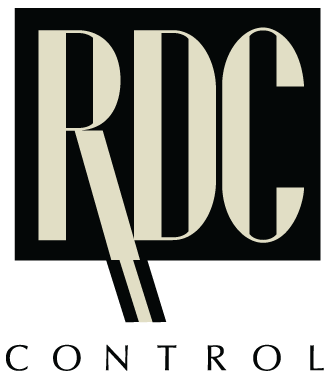Thermocouples are low-impedance temperature sensors that work by producing electro-motive forces (milliVolt) and these EMFs are correlated to a temperature based on a curve specified for that particular and unique to each thermocouple calibration. The EMF produced occurs due to temperature gradients along the wires and not only at the junction. This phenomenon can be explained in three scientific theories called the Seebeck effect, the Peltier effect, and the Thompson effect.
Three laws of thermoelectric circuits explain the thermocouple behavior:
1) The Law of Intermediate Metals.
A circuits EMFs are algebraically additive unless the circuit is at a uniform temperature.
2) The Law of Homogeneous Metals.
An EMF cannot be created unless another type of metal exists in the circuit and a temperature gradient exists.
3) The Law of Intermediate Temperatures.
If two dissimilar homogeneous metals produce a thermal EMF of X; it will remain at that number if a third material is introduced into the circuit, if both ends of that third material are at the same temperature.
The millivolt signal produced by the thermocouple is a very, very, very low level signal. Thus, transmitting this signal over a long distance may be difficult if any extraneous noise is introduced into the system. This noise may cause errors in the EMF signal. Twisted and shielded thermocouple extension wire should be used in areas with excessive noise to help eliminate the problem.
The lead wire that extends from the thermocouple must match the calibration (same metal alloys) of the thermocouple. This lead wire continues to transmit the signal from the thermocouple to the instrument, and as long as it is one homogeneous metal, it will not produce an EMF along that length even if it does experience temperature gradients.
The milliVolt output of a thermocouple depends on the magnitude of the temperature difference between the measuring junction and the reference junction. The reference junction (or cold jonction) is the end to which the thermocouple is connected. While the hot measuring junction is stable at a given temperature, the output of the point at which the reference junction is made must be compensated for in the instrumentation. This is accomplished through cold junction Compensation. The temperature of the cold junction is measured and calculated into the overall EMF signal to obtain the accurate hot junction temperature, or the temperature of the process.
Selection of the optimum type of thermocouple and components for a thermal system is necessarily based on a number of variables or factors of the application. The temperature range, accuracy required, resistance to atmospheric conditions and pressure are typical thermocouple variables for a given application.
The following technical information and application hints are intended to serve only as a guide for thermocouple selection.
Thermocouples are low-impedance temperature sensors that work by producing electro-motive forces (milliVolt) and these EMFs are correlated to a temperature based on a curve specified for that particular and unique to each thermocouple calibration. The EMF produced occurs due to temperature gradients along the wires and not only at the junction. This phenomenon can be explained in three scientific theories called the Seebeck effect, the Peltier effect, and the Thompson effect.
Three laws of thermoelectric circuits explain the thermocouple behavior:
1) The Law of Intermediate Metals.
A circuits EMFs are algebraically additive unless the circuit is at a uniform temperature.
2) The Law of Homogeneous Metals.
An EMF cannot be created unless another type of metal exists in the circuit and a temperature gradient exists.
3) The Law of Intermediate Temperatures.
If two dissimilar homogeneous metals produce a thermal EMF of X; it will remain at that number if a third material is introduced into the circuit, if both ends of that third material are at the same temperature.
The millivolt signal produced by the thermocouple is a very, very, very low level signal. Thus, transmitting this signal over a long distance may be difficult if any extraneous noise is introduced into the system. This noise may cause errors in the EMF signal. Twisted and shielded thermocouple extension wire should be used in areas with excessive noise to help eliminate the problem.
The lead wire that extends from the thermocouple must match the calibration (same metal alloys) of the thermocouple. This lead wire continues to transmit the signal from the thermocouple to the instrument, and as long as it is one homogeneous metal, it will not produce an EMF along that length even if it does experience temperature gradients.
The milliVolt output of a thermocouple depends on the magnitude of the temperature difference between the measuring junction and the reference junction. The reference junction (or cold jonction) is the end to which the thermocouple is connected. While the hot measuring junction is stable at a given temperature, the output of the point at which the reference junction is made must be compensated for in the instrumentation. This is accomplished through cold junction Compensation. The temperature of the cold junction is measured and calculated into the overall EMF signal to obtain the accurate hot junction temperature, or the temperature of the process.
Selection of the optimum type of thermocouple and components for a thermal system is necessarily based on a number of variables or factors of the application. The temperature range, accuracy required, resistance to atmospheric conditions and pressure are typical thermocouple variables for a given application.
The following technical information and application hints are intended to serve only as a guide for thermocouple selection.







